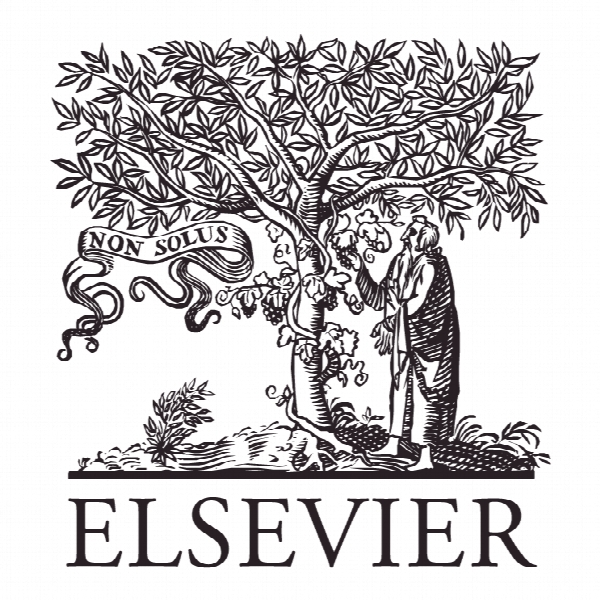تاثیر باورهای عملکردی نسبت به تصور بر حساسیت برند در خدمات حرفه ای B2B The relative influence of functional versus imagery beliefs on brand sensitivity in B2B professional services
- نوع فایل : کتاب
- زبان : انگلیسی
- ناشر : Elsevier
- چاپ و سال / کشور: 2018
توضیحات
رشته های مرتبط مدیریت
گرایش های مرتبط مدیریت کسب و کار، بازاریابی
مجله مدیریت بازاریابی صنعتی – Industrial Marketing Management
دانشگاه Department of Marketing – Deakin University – Australia
منتشر شده در نشریه الزویر
کلمات کلیدی انگلیسی Brand sensitivity, Operational competence, Service brands, B2B branding, Professional service firms, Small and medium-sized enterprises
گرایش های مرتبط مدیریت کسب و کار، بازاریابی
مجله مدیریت بازاریابی صنعتی – Industrial Marketing Management
دانشگاه Department of Marketing – Deakin University – Australia
منتشر شده در نشریه الزویر
کلمات کلیدی انگلیسی Brand sensitivity, Operational competence, Service brands, B2B branding, Professional service firms, Small and medium-sized enterprises
Description
1. Introduction SAP, a leading enterprise software developer, boasts that “The best run businesses run SAP.” As evidence, its advertisements prominently feature clients with well-known brands including Callaway, Discovery Channel, Nestlé, and Hasbro. Accenture, a prominent management consulting firm, claims: “Over 300% growth in Asia Pacific and a mountain of success for Caterpillar” – a leading manufacturer of construction and mining equipment (Accenture, 2017). Also, Xerox, the foremost provider of document management solutions, highlights that it automates the global invoice process for Marriott, customizes Target’s direct mail campaign, and digitizes P&G’s documents (Elliott, 2010). When positioning its respective brands, each of these professional service firms promotes both functional and imagery-related factors by highlighting their high-profile clients in addition to their business acumen. Business-to-business (B2B) researchers have established that strong, well-managed brands can provide both tangible and intangible benefits to firms (Elsäßer & Wirtz, 2017; Homburg, Klarmann, & Schmitt, 2010; Nyadzayo, Matanda, & Ewing, 2016). However, in spite of increasing empirical evidence (e.g. Brown, Zablah, Bellenger, & Johnston, 2011; Zablah, Brown, & Donthu, 2010), many B2B marketers are still skeptical about the role of brands in organizational buying—convinced that buyers base their choices only on objective and functional attributes (Amonini, McColl-Kennedy, Soutar, & Sweeney, 2010). Consequently, the role of branding in the B2B sector “has received comparatively little attention in the academic literature due to a belief that industrial buyers are unaffected by the emotional values corresponding to brands” (Leek & Christodoulides, 2011, p. 830). Therefore, questions remain as to whether subjective, imagery-related factors are as impactful as objective, functional factors in influencing brand sensitivity: “the degree to which brand names and/or corporate associations are actively considered in organizational buying deliberations” (Zablah et al., 2010, p.251). When devising an effective branding strategy, should B2B firms emphasize: 1) objective and/or operational factors (e.g., technology, functionality, performance outcomes), or 2) subjective and/or imagery factors (e.g., their association with high-profile customers, reputation)? Which factor is most likely to influence a buyer’s decision? Answers to these questions are essential as B2B marketers seek to understand whether and how strong brands can be best capitalized to achieve a competitive advantage in B2B service settings (Grewal et al., 2015; Lilien, 2016). While extant B2B branding research has focused on industrial products within manufacturing contexts, the B2B service arena has been largely overlooked (Davis, Golicic, & Marquardt, 2008; Gomes, Fernandes, & Brandão, 2016; Roberts & Merrilees, 2007). This is a notable gap in the literature given the nuances of services (i.e., professional services) delivery (Biedenbach, Bengtsson, & Wincent, 2011). Indeed, B2B service brand equity is an important differentiator and a key factor that influences a buyer’s purchase decisions (Berry, 2000; Dall’Olmo Riley & De Chernatony, 2000). Legal, insurance, advertising, management consulting, IT, human resources and accounting firms typically comprise the professional services domain. Professional service firms compete in the fastest growing sector in the global economy (Amonini et al., 2010). They are characterized as knowledge-intensive with low capital intensity and a workforce that provides an array of specialized B2B services (Von Nordenflycht, 2010). In 2015,1 there were nearly 900,000 professional service firms in the United States, generating a combined annual revenue in excess of $1.7 trillion (International Trade Administration, 2016).


